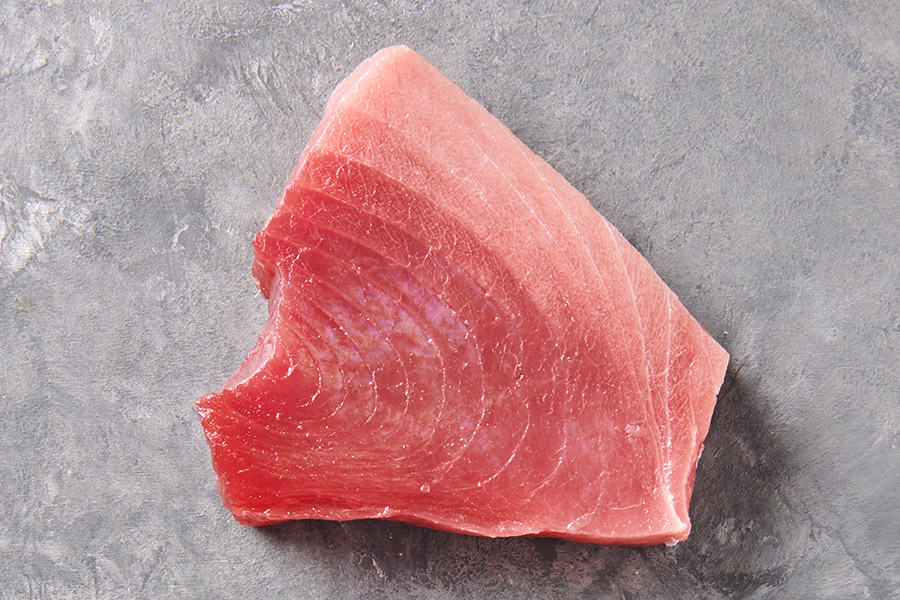
Yellowfin Tuna
About Yellowfin Tuna
There are fifteen different tuna species worldwide, and we’ve thoughtfully selected the yellowfin tuna because of its superior quality, taste, and sustainability. Also known as ahi tuna, the yellowfin is a popular fish. Tuna of all kinds—whether “number one” sushi-grade like ours, or the canned variety found in supermarkets—makes up one-third of all consumed seafood in the U.S., and more than half of consumed finfish. That’s a lot of tuna.
A single tuna can grow up to 400 pounds. With a sleek, torpedo-shaped body and binocular vision, they travel fast and hunt proficiently, falling prey only to marine mammals, billfish, and sharks. Yellowfin tuna swim almost non-stop. Traveling in large schools, the species is highly migratory and requires international cooperation to monitor sustainable stock levels. They are found mid-ocean and towards the surface, swimming in the tropical climates of the Atlantic, Pacific, and Indian oceans. In the western Pacific region where our tuna land, there is little-to-no bycatch, no habitat disruption, and no threat of overfishing, making it a Seafood Watch Best Choice.
At market, tuna are graded for quality on a scale of one to four. We source only number one yellowfin tuna, meaning its freshness, flavor, texture, color, and fat content are the highest possible quality. Yellowfin, in particular, is a lean species of tuna, meaning that the meat has a distinct, dark red color.
The common perception of all tuna species is “the redder, the better,” but Chef Todd advises this isn’t always so. Big eye tuna, for example, is similar to yellowfin but has a higher fat content. He notes that a fatty piece of tuna is often misperceived as less fresh because of its color. “The hue starts to fade because the red blends with the whiteness of fat, and that turns into a pale red,” Chef Todd says. “Fat is what actually makes big eye so delicious.” Each tuna species is graded according to its distinct characteristics, meaning that a number one big eye and a number one yellowfin may not look the same, but they’re both high-quality options.
Yellowfin tuna is an excellent option for raw preparations. Tartare, poke, sushi, sashimi, the fish serves perfectly in all styles. For cooking, Chef Todd recommends giving the tuna a quick sear, keeping the temperature rare. Tuna is especially sensitive to overcooking. Its mild taste and firm texture shine with minimal effort.
Facts About Yellowfin Tuna
Wild Caught
Catch Region: South America
Catch Region: South America
Fishing Method: Hand-operated pole-and-lines
Seasonality: Year-round
Flavor Profile: Rich, delicate
Texture Profile: Firm
Monterey Bay Aquarium Seafood Watch Rating: Best Choice/ Green
Recommended Preparation: Seared rare, poke, sashimi, sushi, tartare
Substitute: NA


